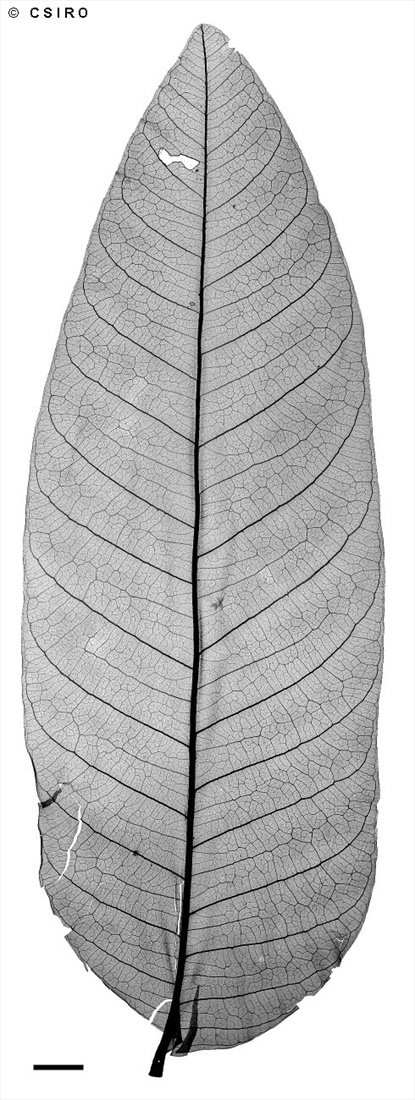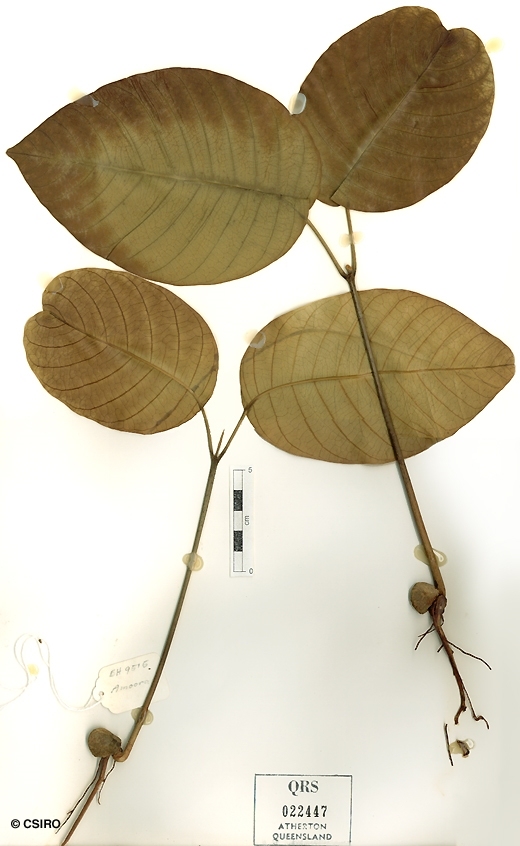Australian Tropical Rainforest Plants - Online edition
Aglaia spectabilis (Miq.) S.S.Jain & Bennet
Click/tap on images to enlarge

Scale bar 10mm. © CSIRO

Cotyledon stage, semi-hypogeal germination. © CSIRO
Family
Jain, S.S. & Bennet, S.S.R. (1987) Indian Journal of Forestry 9(3) : 271.
Common name
Amoora; Cape York Cedar; Pacific Maple
Stem
Milky exudate meagre but usually quite obvious and emerging from fine layers in the blaze. Faint incense odour often apparent in the blaze.
Leaves
Flowers
Fruit
Fruits about 6-9 x 5.5-9 cm. Aril or sarcotesta completely enclosing the seed.
Seedlings
Each cotyledon +/- paraboloid in shape with the face of the cotyledon forming the base of the paraboloid. Cotyledon faces in a plane at right angles to the long axis of the seed. First pair of leaves about 10-15 cm long. At the tenth leaf stage: terminal bud clothed in stellate hairs or scales. Seed germination time 21 to 28 days.
Distribution and Ecology
Synonyms
Amoora spectabilis Miq., Annales: Museum Botanicum Lugudno-Batavum 4 : 37(1869), Type: Cult. in Hortus Calcuttensi, (? Anon. in Herb. E. I. C. 1278 K; 1278.1 K - W. Amoora cucullata Roxb., Plants of the Coast of Coromandel 3: 54(1820).
RFK Code
633
Copyright © CSIRO 2020, all rights reserved.

Web edition hosted at https://apps.lucidcentral.org/rainforest




